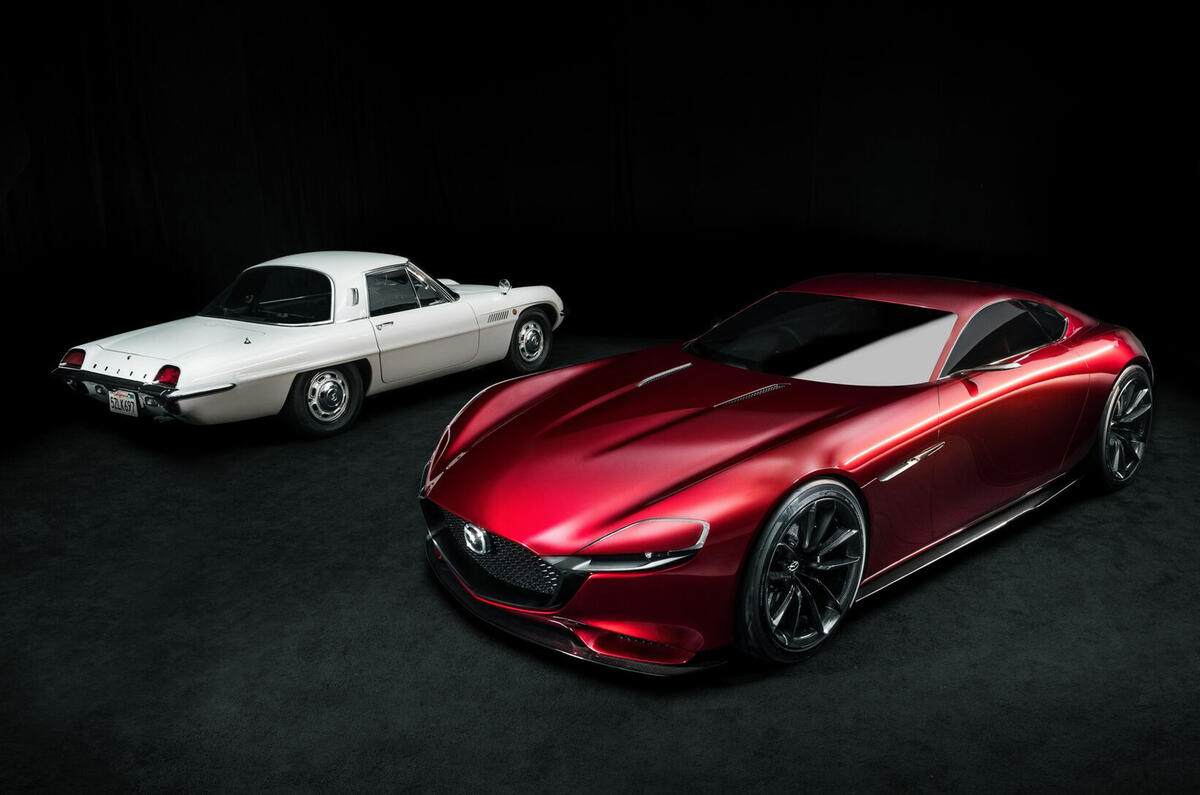Mazda has confirmed it will reveal its next generation of rotary engines later this week via its Chinese branch's Weibo social media account.
Chang'an Mazda posted an image of the brand's first rotary-engined model, the 1967 Cosmo coupé, accompanied by a new logo for the brand's "7th Gen Product Cluster" and the phrase "rotor engines make the world more beautiful".

At the 2017 Tokyo motor show, Mazda boss Mitsuo Hitomi voiced plans for the firm to bring back its famed rotary engine as a range-extender because it is “much, much quieter” than the alternatives.
The Japanese firm’s range hasn’t featured a rotary-engined road car since the RX-8 went out of production in 2012 but it did produce a prototype Mazda 2 featuring the tech back in 2013, which Autocar drove. It has remained interested in reintroducing the technology to production since. Mazda’s RX-Vision Concept, which was shown at the Tokyo motor show in 2015, used such a powertrain.
Hitomui later confirmed that, rather than being used in its purest form, a rotary engine will appear in a range-extender version of its first electric vehicle due in 2019.
When asked if Mazda was developing a standalone rotary engine, he said: “Even if there isn’t a plan to have it in an actual product, of course we are developing a rotary engine alone.” He strongly hinted that a rotary engine-powered model is likely to exist alongside the range-extender in the future.
Asked why Mazda will use a rotary engine as a range-extender, Hitomi said: “the rotary engine isn’t particularly efficient to use as a range-extender but when we turn on a rotary, it is much, much quieter compared to other manufacturers’ range-extenders”, which is seemingly suited to the near silence of electric cars.










Join the debate
Add your comment
No point in carrying a heavy and expensive 300-mile battery
I totally agree with you,There's no point in carrying a heavy and expensive 300-mile battery everywhere if you usually travel less than 100 miles, but sometimes 350 miles.
mimif wrote:
In which case get an EV with a 200 mile range and 150kwh possible charge time. For those rare occasions a 30 minute stop after 4 hours of driving isn't a disaster. Saves carrying a big, heavy, expensive engine, exhaust, gearbox, clutch, fuel tank, radiator etc
I like the series hybrid
A short-range (~100 mile) EV with a range extender powerful enough for 80mph cruising (~50kW) is a good solution IMO. For most people that would allow them to be purely electric for their commute and the bulk of their driving, but it would also allow trips of any length without the EV range anxiety.
No point carrying a heavy and expensive 300 mile battery everywhere if you generally drive less than 100 miles but occasionally drive 350.
Possible emission irony
I thought wankel engines were a no-no due to their poor emissions..have they brought out/invented some new technology in conjunction with the engine, rotor tips etc